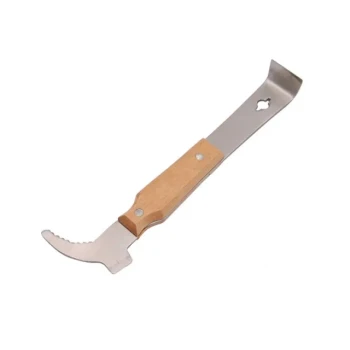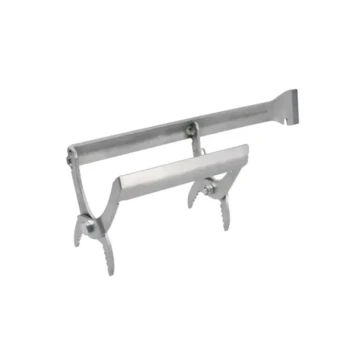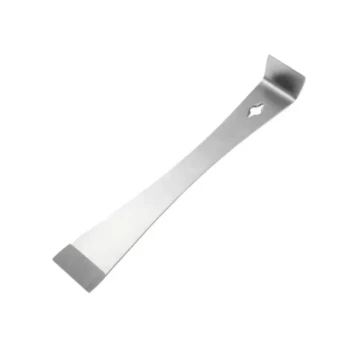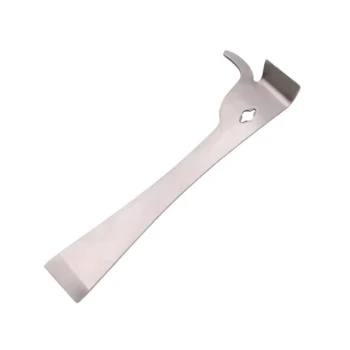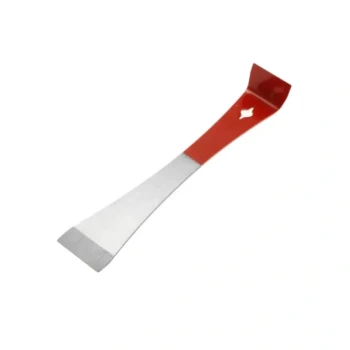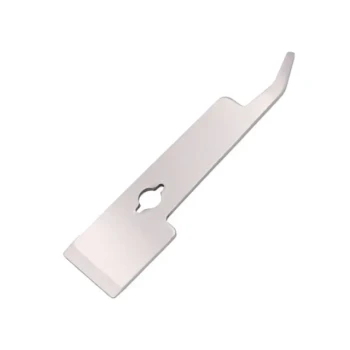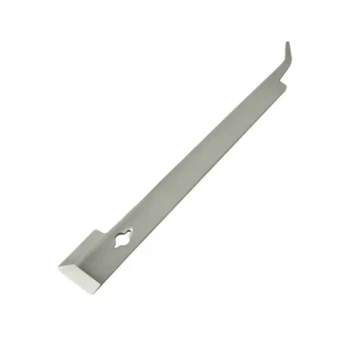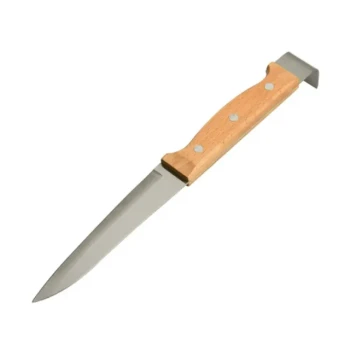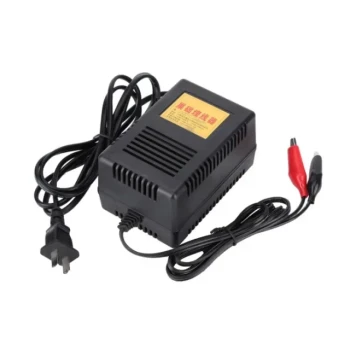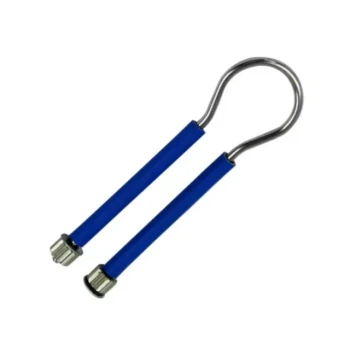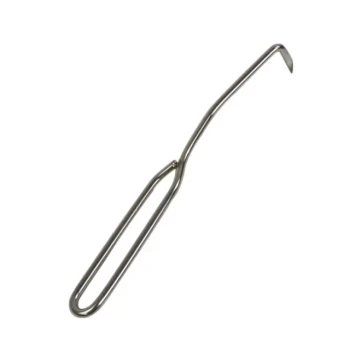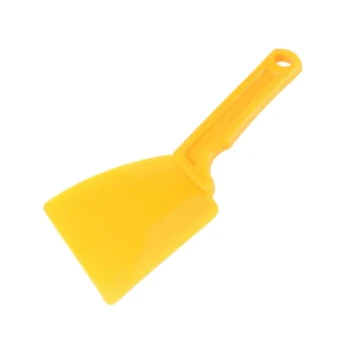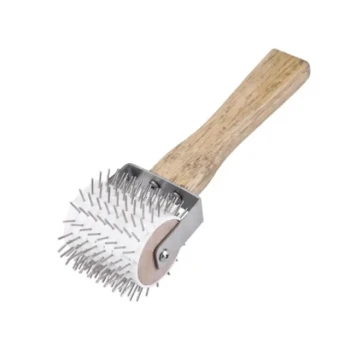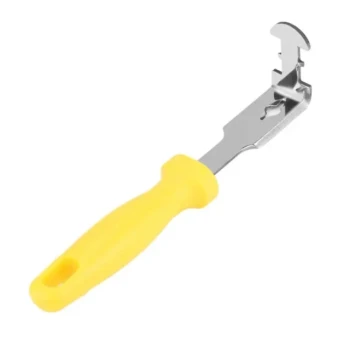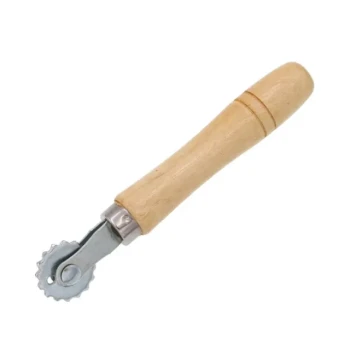An entrance reducer is a seasonal tool, not a permanent fixture. It should be used primarily in the fall and winter to provide defense and reduce drafts for the colony. As a general rule, it should be removed in late spring and summer when the colony is strong and hive traffic is high, or when you would be comfortable outside in just a light sweater.
The decision to use an entrance reducer is not about the calendar, but about balancing your colony's need for defense against its need for efficient operation. A reducer provides critical protection for smaller or overwintering colonies but can become a bottleneck for a thriving hive during a strong nectar flow.
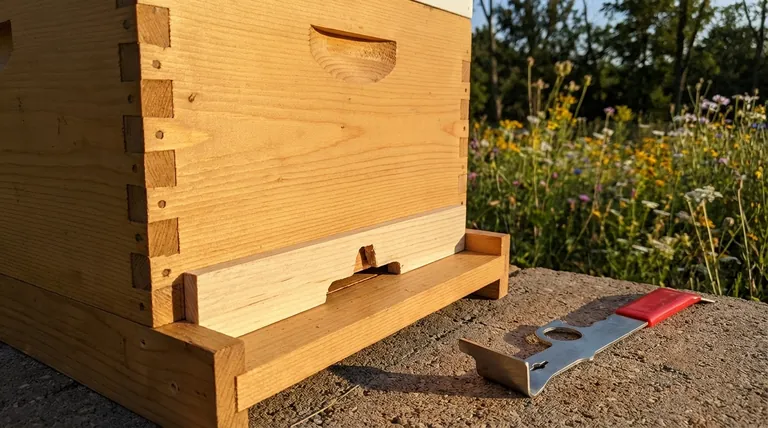
The Primary Role: A Defensive Barrier
The most critical function of an entrance reducer is to shrink the size of the doorway your bees must defend. This is essential when the colony is at its most vulnerable.
Preventing Robbing in the Fall
As nectar sources become scarce in the fall, honeybee colonies from other hives may attempt to "rob" weaker hives of their winter stores.
A smaller entrance is far easier for a colony's guard bees to defend, preventing these fatal invasions. This is one of the most important times to use a reducer.
Deterring Pests and Predators
In the autumn and winter, pests like mice, wasps, and yellow jackets will seek a warm, food-rich place to shelter.
An entrance reducer, especially one with a small notch, physically blocks mice and makes it much harder for insect pests to gain access.
Aiding Young or Weak Colonies
A newly installed package, a small nucleus colony, or a hive that is otherwise struggling has a smaller population of bees.
Using a reducer helps these small colonies manage their defensive duties, allowing them to focus resources on brood-rearing and growth instead of fending off intruders at a wide, undefended entrance.
The Secondary Role: Climate Control
While bees are remarkably good at managing their own hive temperature, a reducer can assist them during the coldest months.
Reducing Drafts in Winter
A wide-open entrance in the dead of winter can create a cold draft, forcing the winter cluster of bees to expend more energy and consume more honey to stay warm.
Reducing the entrance size helps the colony more easily maintain its crucial internal temperature. However, the entrance must never be allowed to become blocked by snow or dead bees.
The Ventilation Connection
It is important to remember that bees also need to ventilate the hive to manage moisture. The smallest reducer opening is often best for winter, but it must be positioned to provide upper ventilation if possible.
Understanding the Trade-offs
Using an entrance reducer is an intervention with both benefits and drawbacks. Understanding these trade-offs is key to using them correctly.
Impeded Traffic Flow
The most significant downside occurs during a heavy nectar flow in the summer. A strong, populous colony will have thousands of foragers coming and going.
An entrance reducer creates a "traffic jam," slowing down foraging operations and potentially reducing the amount of honey your hive can produce. If you see a bottleneck of bees at the entrance, the reducer should be removed.
Reduced Air Circulation
While reducing drafts is good in winter, restricting airflow in hot, humid weather is detrimental. Bees need to ventilate the hive to cool it and to dehydrate nectar into honey.
A reducer can hinder this process. In summer, a strong colony can defend a full-sized entrance and benefits from maximum airflow.
Over-reliance vs. Bee Behavior
Some beekeepers argue that bees are fully capable of managing their own entrance size. Given the chance, bees will use propolis (a resinous bee-made glue) to construct their own reducer if they feel the entrance is too large.
Relying on a wooden reducer can be seen as overriding the colony's own instincts and capabilities.
Making the Right Choice for Your Colony
Your decision should be based on the specific condition and goal for each individual hive.
- If your primary focus is overwintering a colony or protecting a new/weak hive: Use a reducer with the smallest opening to maximize defense and minimize heat loss.
- If your primary focus is maximizing honey production in summer: Remove the reducer entirely once the colony is strong to prevent traffic jams and improve foraging efficiency.
- If your primary focus is a balanced, 'hands-off' approach: Consider forgoing a reducer, especially in milder climates, and trust a strong colony to manage its own entrance with propolis.
Ultimately, observing your bees' behavior at the entrance is the most reliable guide for making the right decision.
Summary Table:
| Season | Recommended Action | Primary Reason |
|---|---|---|
| Fall / Winter | Use the reducer | Provides defense against robbing, pests, and drafts for a vulnerable colony. |
| Spring / Summer | Remove the reducer | Prevents traffic jams for foragers and improves hive ventilation during nectar flows. |
| For Weak/New Colonies | Use the reducer | Helps small populations defend the entrance and focus on growth. |
Equip Your Apiary with the Right Tools for Every Season
Managing your hives effectively requires the right equipment for the right time. As a trusted wholesale supplier to commercial apiaries and beekeeping equipment distributors, HONESTBEE provides durable, high-quality entrance reducers and other essential beekeeping supplies designed to support the health and productivity of your operations.
Let us help you strengthen your hives and maximize your honey production.
Contact HONESTBEE today to discuss your wholesale supply needs and discover how our equipment can contribute to your success.
Visual Guide

Related Products
- HONESTBEE Advanced Ergonomic Stainless Steel Hive Tool for Beekeeping
- HONESTBEE Professional Multi-Functional Hive Tool with Ergonomic Wood Handle
- Multi-Function Plier-Style Frame Grip Hive Tool
- Professional Dual-End Stainless Steel Hive Tool for Beekeeping
- HONESTBEE Professional Long Handled Hive Tool with Precision Cutting Blade
People Also Ask
- What tools are used for cleaning frames? A Beekeeper's Simple 4-Tool Guide
- How should beekeepers handle bees when using a hive tool? Master Calm, Deliberate Techniques
- What is the hole in a hive tool for? A Multi-Tool for Apiary Repairs and Maintenance
- What are some common uses of a hive tool? Essential Multi-Purpose Tool for Every Beekeeper
- What are the features of a regular hive tool? The Essential Multi-Tool for Every Beekeeper

